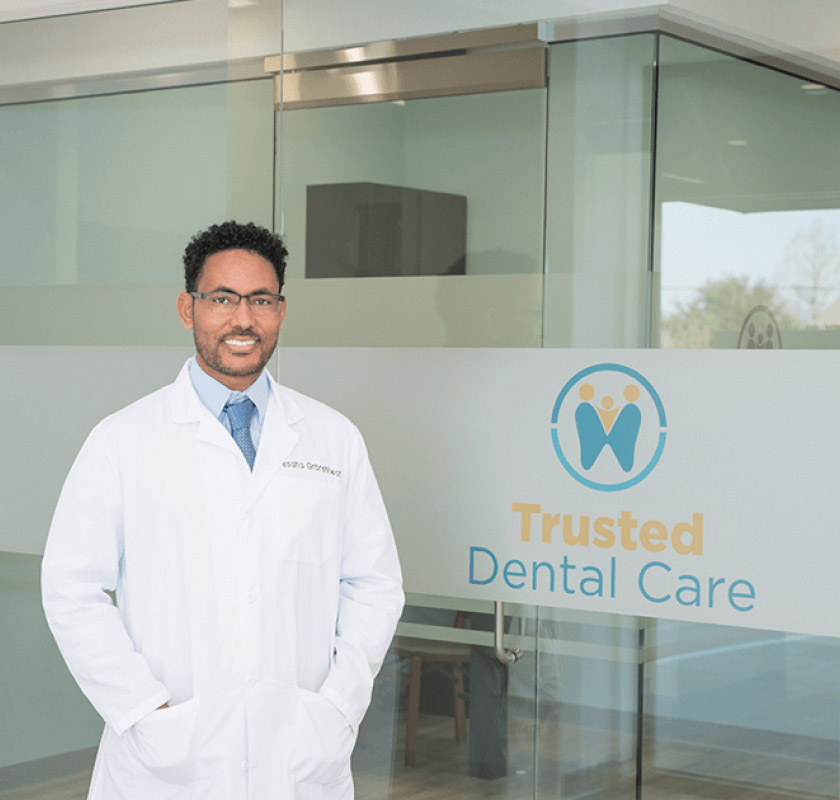Do You Need Bone Grafting or Sinus Lift Surgery Before Dental Implant Treatment?
Dental implants offer a revolutionary solution for replacing missing teeth, providing a sturdy foundation that mimics the natural tooth root. However, not all patients have the optimal oral conditions to support dental implants immediately. Supplemental procedures such as bone grafting and sinus lifts are often necessary to create a stable environment for implants.
If you’ve been told in the past that you’re not a good candidate for dental implants, contact Trusted Dental Care! We’ll evaluate your oral health and determine if a supplemental procedure, such as bone grafting for dental implants, will get you ready for a new smile! Call our dentist in Wylie, TX, today at(214) 702-0446.

What Are Supplemental Procedures?
Supplemental procedures refer to additional steps that may be necessary to prepare the mouth for the placement of dental implants. These procedures are designed to address specific issues that can affect the success of dental implant placement, such as insufficient jawbone density, issues with the gums, or other factors that may impact the stability and longevity of the implant. Some common examples of supplemental procedures include bone grafting, sinus lifts, and ridge augmentation.
Supplemental procedures aren’t always necessary, and the need for them will be determined on a case-by-case basis by our dentist. In some cases, dental implants may not be the best tooth replacement.
Why Are Supplemental Procedures Necessary?
Ensuring Implant Success
A dental implant requires a certain amount of healthy bone to anchor securely. Without adequate bone density or volume, implants can fail. Supplemental procedures, like bone grafting and sinus lifts, help build a strong foundation, ensuring the long-term success of dental implants.
Addressing Bone Loss
Bone loss is a common issue in patients needing dental implants, often resulting from prolonged tooth loss, gum disease, or trauma. When teeth are missing, the jawbone can deteriorate due to lack of stimulation. These supplemental procedures regenerate bone, providing a solid base for implant placement.

Preparing for Dental Implants: Bone Grafts & Sinus Lifts
Bone grafting is a procedure that adds bone or bone-like material to the jaw to increase its volume and density. The bone graft process is crucial for patients with insufficient bone mass, ensuring the implant can be securely anchored.
Types of Bone Grafts
- Autograft: Bone is taken from another part of the patient’s body, usually the hip or chin. This type has the highest success rate since the bone is biologically compatible.
- Allograft: Bone is sourced from a donor (cadaver) and processed to ensure safety. This option eliminates the need for a second surgical site.
- Xenograft: Bone is derived from animals, typically cows. It undergoes extensive processing to make it safe for human use.
- Alloplast: Synthetic bone graft materials, such as hydroxyapatite or tricalcium phosphate, are used. These materials encourage natural bone growth over time.
The Bone Grafting Procedure
- Consultation and Planning: Our dentist will evaluate your oral health and discuss your medical history before the procedure. X-rays or CT scans may be taken to assess the bone condition.
- Surgery: We’ll make an incision in the gum to expose the bone. The bone graft material is placed at the site, and the gum is sutured back in place.
- Healing: Over several months, your dental bone graft integrates with the existing bone, creating a stable base for the dental implant.
Sinus Lift
A sinus lift, or sinus augmentation, is a procedure to increase the amount of bone in the upper jaw, specifically in the area of the molars and premolars. It’s necessary when the sinuses are too close to the jawbone, leaving insufficient space for dental implants.
The Sinus Lift Procedure
- Initial Consultation: Similar to bone grafting, an evaluation, including X-rays or CT scans, will be conducted to plan the surgical procedure.
- Surgery: Our dentist makes an incision in the gum to expose the bone. A small window is opened in the bone, and the sinus membrane is gently lifted.
- Bone Grafting: Bone graft material is placed into the space where the sinus was, increasing the height and volume of the bone.
- Healing: The area heals over several months, with the graft material integrating with the natural bone.
Ridge Augmentation
Ridge augmentation is a surgical procedure that rebuilds the natural contour of the gums and jaw after tooth loss or extraction. This process is essential for patients who have experienced significant bone loss, which can affect the appearance and stability of a dental implant.
The Ridge Augmentation Procedure
- Initial Evaluation: Our dentist will perform a thorough examination, including imaging studies, to assess the bone and gum tissue condition.
- Surgical Process: An incision is made in the gum to expose the bone. The bone graft material is then placed along the deficient area to rebuild the ridge.
- Tissue Regeneration: Sometimes, a membrane is placed over the graft to protect it and encourage tissue regeneration.
- Healing: The grafted area is allowed to heal for several months, during which new bone and tissue form, creating a stable foundation for dental implant surgery.
Frequently Asked Questions
Healing time can vary depending on the specific procedure, but bone grafting and sinus lifts can take several months to heal before a dental implant treatment can begin.
No, supplemental procedures aren’t always necessary. Whether a supplemental procedure is needed before a dental implant treatment depends on the individual’s oral health. Some medical conditions may not require a supplemental procedure, while others may require one to achieve the desired implant results.
Whether insurance will cover the cost of a supplemental procedure depends on your insurance plan. Some insurance plans may cover the costs, while others may only partially cover them or not cover them at all. It’s best to check with your insurance provider for specific information about coverage for a particular supplemental procedure. It’s also a good idea to carefully review your insurance policy and understand any deductibles, copays, and other costs you may be responsible for.
Get Dental Implant Ready With Supplemental Procedures
Dental implant supplemental procedures are additional steps that may be necessary to prepare the mouth for the placement of dental implants. Learn more about supplemental procedures or dental implants with our Wylie dentist. Contact our dental office today at (214) 702-0446 to schedule your appointment.